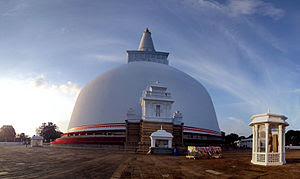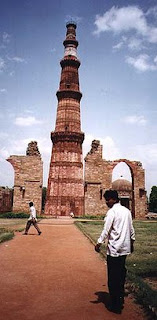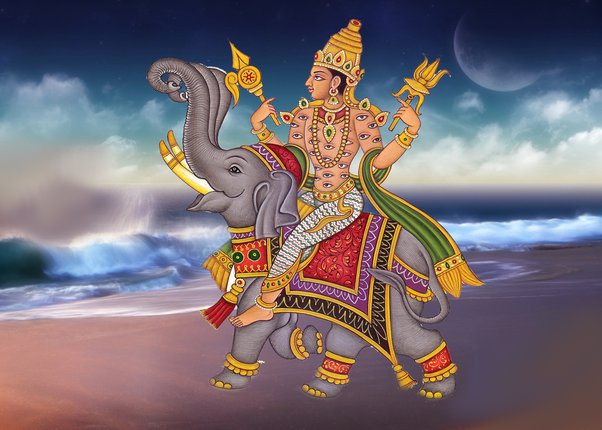Ahmadnagar Sultanate, known more famously as
the Nizam Shahi Dynasty, was one of the five independent states that arose on
the debris of the Bahmani Sultanate. The Sultanate derives its name from
Ahmadnagar, the seat of the power, which is 120 km northeast of Pune and located
in the state of Maharashtra.
Nizam Shahi dynasty was founded by Malik Ahmad,
son of Hasan Nizamul Mulk, (wazir) Prime Minister of the Bahmani kingdom after
Mahmud Gawan’s execution in 1481. Mahmud Gawan was a renowned Islamic scholar
who rose in ranks to become the wazir of the Bahmani kingdom. Malik Ahmad, who
was appointed to the governorship of Junnar, asserted his independence in 1490.
He transferred his seat of government from Junnar to Ahmadnagar which he
founded in 1494. During his rule Daulatabad became part of the Ahmadnagar
kingdom in 1499.
After Ahmad’s death in 1510, he was succeeded
by his son Burhan, a lad of seven years at that time. Burhan, the first of the
Nizam Shahis to assume the title of Nizam Shah, ruled for forty-three years.
His interests were ably served by his able minister Mukammal Khan Dakhimi. Ahmadnagar,
during his reign, changed sides and joined coalition with the kingdoms of Bidar, Bijapur. Golcunda and Berar and
Vijayanagar against one another. He joined a coalition of Vijayanagar ruler against
Bijapur in 1550. After his death in 1553 Burhan was succeeded by his son
Husain Shah Nizami who joined the Deccan Muslim Sultanates against the
Vijayanagar in the famous Battle of Talikota in 1665. The great city of Hampi, the
seat of the Vijayanagar empire, was sacked after the defeat of the Vijayanagar
Raya.
Husain died in 1665 and was succeeded by his
son Murtada Nizam Shah I (1565-88). During his rule, the Imad Shahi dynasty
came to an end with the annexation of Berar to the Ahmadnagar kingdom in 1574. However, after this, Murtada lost his mental balance and began to consider his own son
Miran to be his adversary. On the other hand, Miran conspired against his
father and suffocated him to death while he was in his bed. This happened in
1588. Miran did not reign long and was succeeded by Ismail (1589-91) who ruled
for two years. His reign was marked by the struggle for power between the Shias
and the Mahdawi sect. Ismail’s father , Burhan Nizam Shah II, defeated his son’s army and ascended the Ahmadnagar throne.
Burhan suffered a series of defeats at the hands of Ibrahim Adil Shah II of the
Adil Shahi dynasty. He was also unsuccessful in recovering Chaul from the
Portuguese. It was during Burhan’s reign that Burhan I – Ma’athir was compiled.
Burhan Nizam Shah II was succeeded by his son
Ibrahim whose rule lasted for only four months. Confusion reigned supreme in
the Ahmadnagar kingdom as there were four claimants to the throne. While one of
them was supported by Chand Bibi, daughter of Husain Nizam Shah and widow of
Ali Adil Shah of Bijapur, Miyan Manjhu threw his weight with another. Miyan Manjhu
asked for help from Mughal emperor Akbar’s son prince Murad who responded by besieging
the Ahmadnagar fort. Chand Bibi fought gallantly but in the end in 1596 she was
forced to enter into an agreement with the Mughals, ceding Berar to the Mughal
empire. Peace, however, did not last long and the Mughals again laid siege to
the capital. It was during the second attack that Chand Bibi was either murdered
or took poison and lost her life (1600).
However, the sagging fortunes of the
Ahmadnagar empire were revived by Ahmandnagar’s Abyssinian minster Malik Ambar.
He was a thrice manumitted Abyssinian (Ethiopian) slave who is known in the medieval period
as a great statesman and able administrator. Deciding not to surrender to the Mughal might, he raided the Mughal
territory with great effect by means of guerrilla tactics. He installed Murtaza
II as ruler of Nizam Shahi dynasty with his capital at Parenda. Malik Ambar’s gallant
resistance to the Mughal forces ended when he was defeated by Mughal Prince
Khurram first in 1617 and again in 1621. Applauding his role in this victory,
Prince Khurram was given by his father Jahangir, the fourth Mughal Emperor, the
title of Shah Jahan (King of the World). Malik Ambar’s death in 1626 was the
last nail in the Ahmadnagar Sultanate's coffin. Murtada III, the last Nizam Shahi ruler,
was captured by Aurangzeb during the reign of Shah Jahan in 1636. The Nizam
Shahi territories were divided between the Mughals and the Adil Shahi kingdom
of Bijapur.





